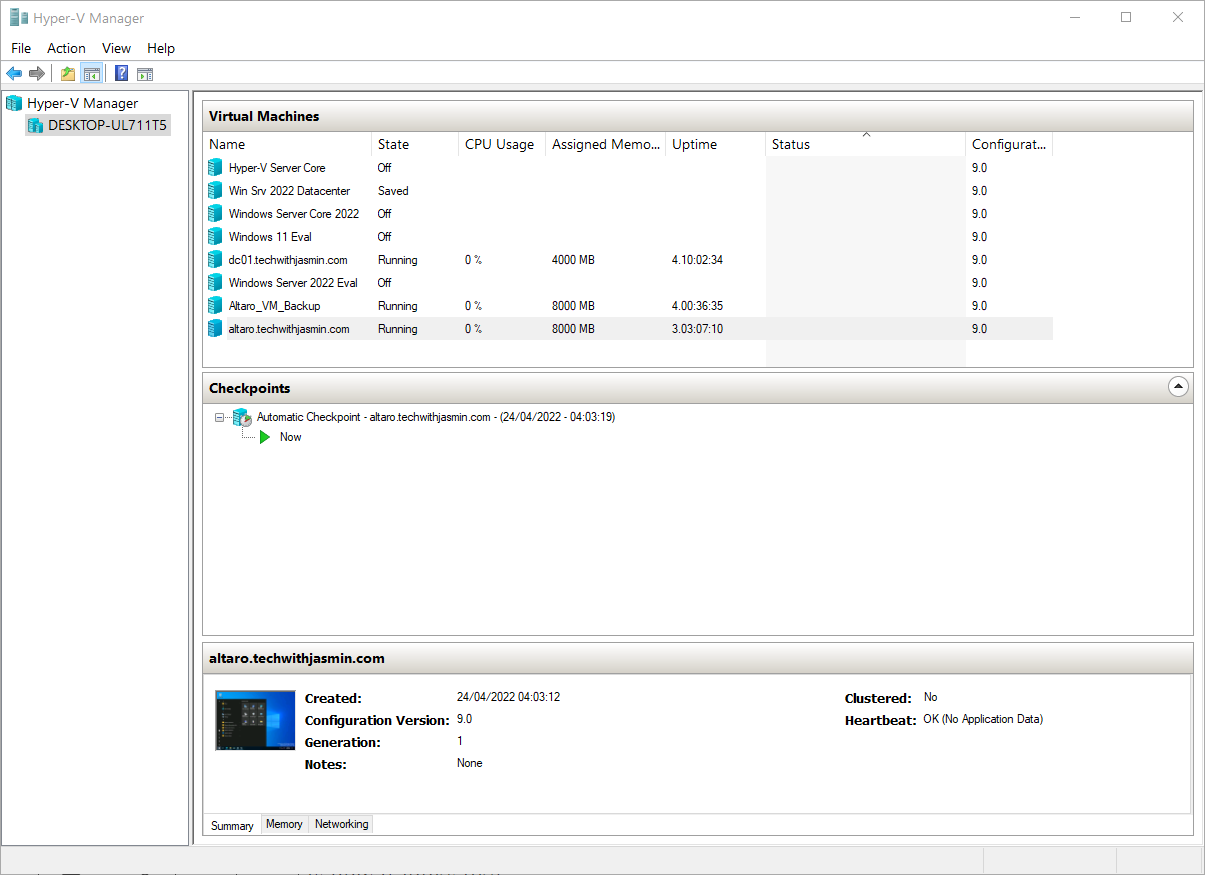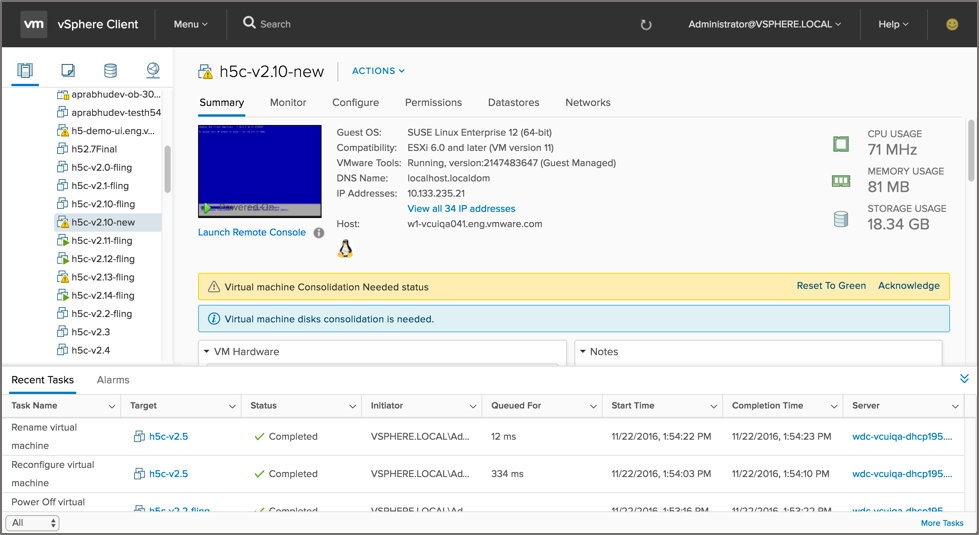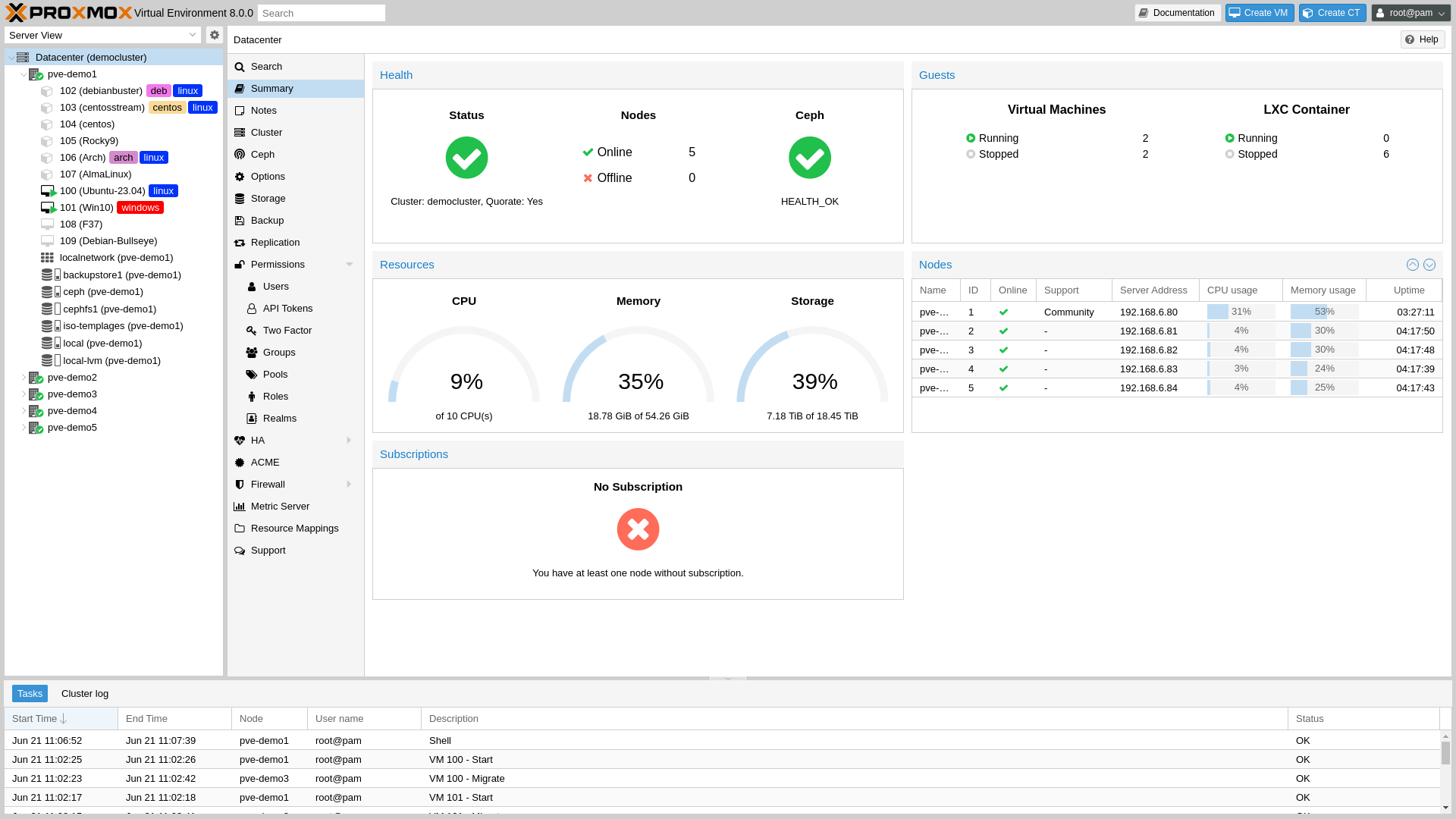Server Virtualization
is an advanced process of dividing a physical server into many unique and isolated virtual servers using dedicated applications. Each server can independently run its own operating system and execute its own individual processes on it.
Advantages of virtualization
Resource utilization
Thanks to virtualization, you no longer need to buy another processor, and configure a separate server for each system and application. Virtualization also allows you to fully utilize the computing power of the server thanks to the flexibility provided by virtualization, adding additional virtual machines is simple and does not require interference in the environment.
Scalability
Ease of implementation allows for quick introduction of new services, to implement a new server just a few clicks, and assigning it the appropriate properties. Virtualization allows for quick expansion and contraction of the virtual server environment as needed.
Easier management
All virtual machines start in the same place, on one physical server. This means that managing them is also much easier than managing different physical servers. With access to the main machine, we can manage all servers and applications that run thanks to virtualization.
Cost optimization
Virtualization also allows us to optimize costs: by keeping all servers on one physical machine, we save on hardware, maintenance and energy costs.
Virtualization Tools
Server virtualization tools have a graphical interface and allow you to manage the main specifications of individual virtual machines.
Microsoft Hyper-V
This is Microsoft's solution for virtualization, and can be found even on personal computers with the PRO version of Windows installed. Hyper-V is a hypervisor, i.e. a type of software that allows you to manage virtualization processes, this solution allows you to virtualize physical machines and manage them.

Source https://techwithjasmin.com/windows/how-to-manage-your-hyper-v-vms-using-web-interface/
VMware vSphere/ESXi
Virtualization software released by VMware. vSphere is a comprehensive virtualization solution, and ESXi is a Type 1 hypervisor (running directly on the hardware) that allows you to deploy and run virtual machines.

Source https://blogs.vmware.com/vsphere/2016/12/new-vcenter-management-clients-vsphere-6-5.html
Proxmox
A free alternative to the previously presented tools may be: Proxmox – open source software, it is a hosted hypervisor on which you can run different operating systems and set up virtual machines. This software is based on Debian – a Linux distribution.

Source: https://en.wikipedia.org/wiki/Proxmox_Virtual_Environment
Cloud Virtualization
Virtualization can also take place in in the cloud – cloud providers such as e.g. Microsoft Azure "rent" the computing power of their servers. Cloud providers offer flexible and scalable virtualization environments on which, just like in the previous part of the article, you can place many separate virtual machines that will work in the same way.
Summary
Server virtualization is an advanced process that allows you to divide one physical server into multiple virtual servers. Key benefits of this solution include efficient resource utilization, scalability, ease of implementing new services, simplified management, and cost optimization. If you are interested in virtualization and its positive impact on your business, contact us and we will help you implement this solution in your company.
Because with us IT becomes simple ~ SimpleIT





